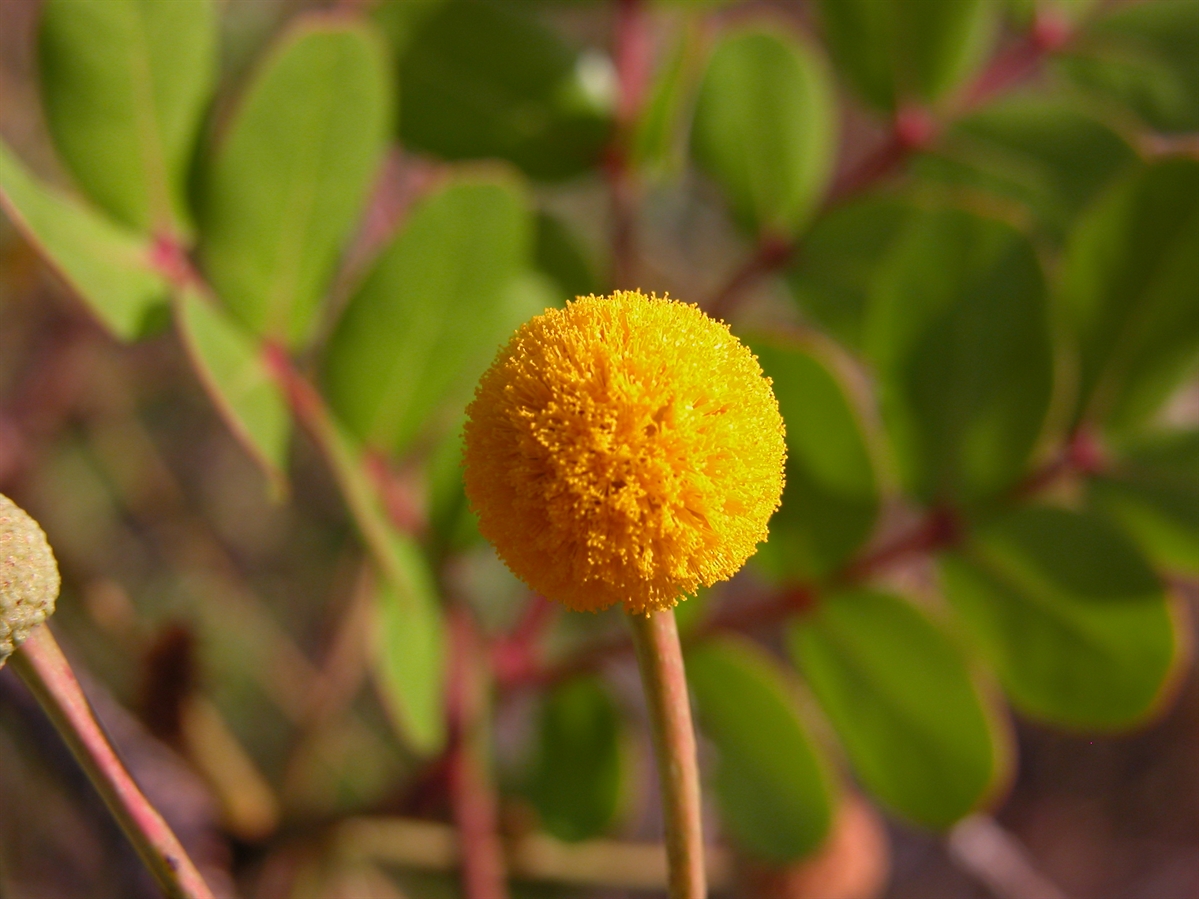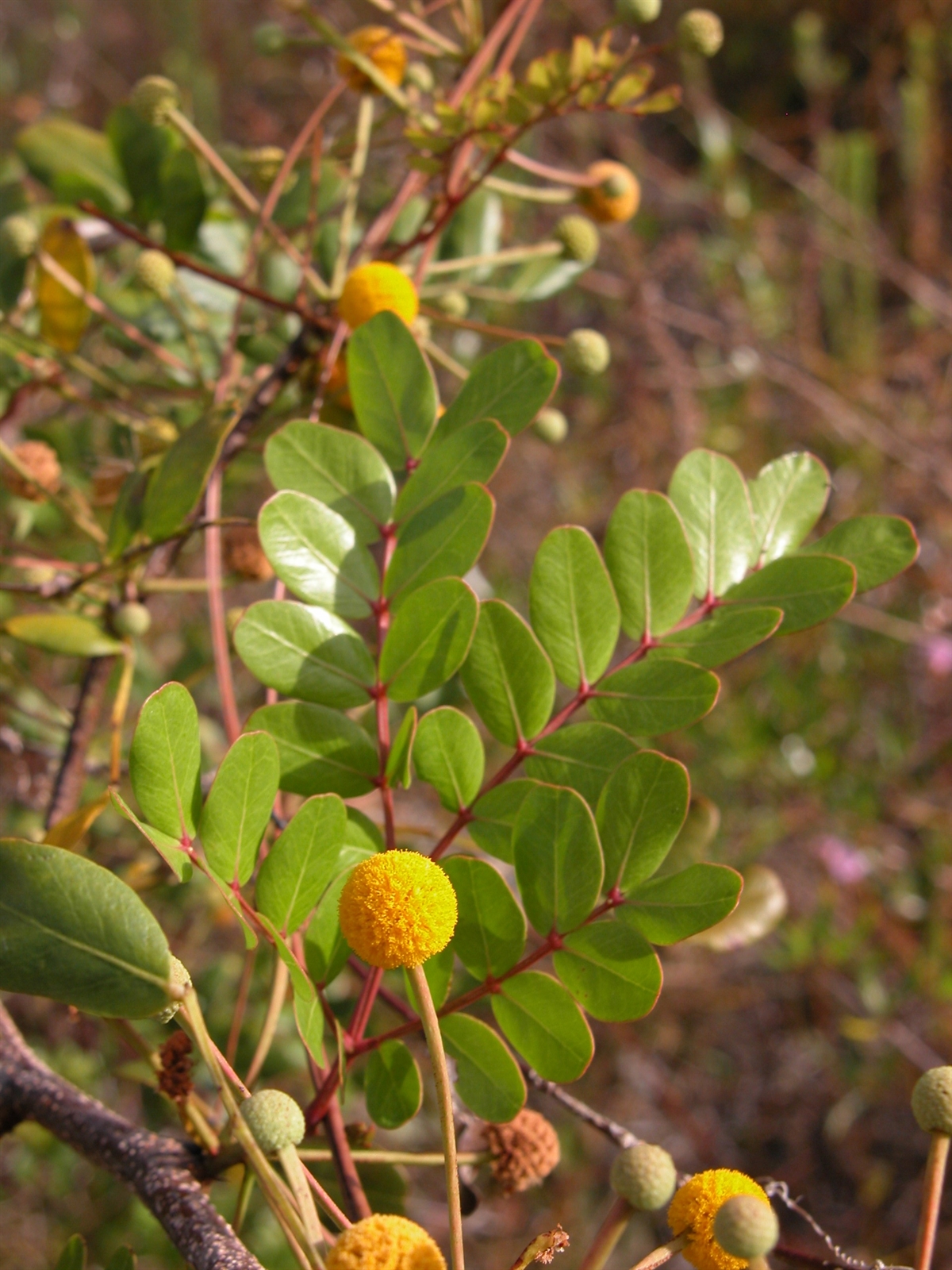Habit: Vachellia choriophylla grows as a medium sized tree up to 10 m in height with a trunk to 40 cm in diameter and has no spines. The trunk is brown with whitish fissures/cracks in the outer layer of the bark. The bipinnate leaves are arranged alternately with small stipules at the base of the petioles. There are 1 – 3 pairs of pinnae each with 4 – 10 pairs of leaflets. The leaflets are dark green, to 1 cm in length, oblong with an obtuse or emarginate leaf tip and entire margin.
The complete, perfect, actinomorphic flowers are arranged in tight, axillary or terminal, globular heads with each flower subtended by a bract. There are 5 fused sepals in the calyx forming a shallow tube. There are 5 fused petals in the corolla forming a tube that exceeds the calyx. There are numerous, orange/yellow showy stamens that are 2 times as long as the perianth. The ovary is superior with a single locule. The fruit is a legume that turns brown at maturity and is up to 6 cm in length. The seeds are embedded in a white fleshy pulp.
Habitat: Vachellia choriophylla grows in Dry Broadleaf Evergreen Formations- Forest/Shrublands (coppice), Pine Woodlands, as well as sand dunes and in Human Altered areas.
Distribution: Vachellia choriophylla occurs on all island groupings within the Lucayan Archipelago as well as the Florida Keys and Cuba.
Medicinal/Cultural/Economic usage: Vachellia choriophylla is useful for attracting butterflies and birds and in southern Florida. Vachellia choriophylla is used in the horticultural industry. It is highly drought and salt tolerant.
The pulp surrounding the seeds is edible but Vachellia choriophylla has no known medicinal use in the Bahamas.

